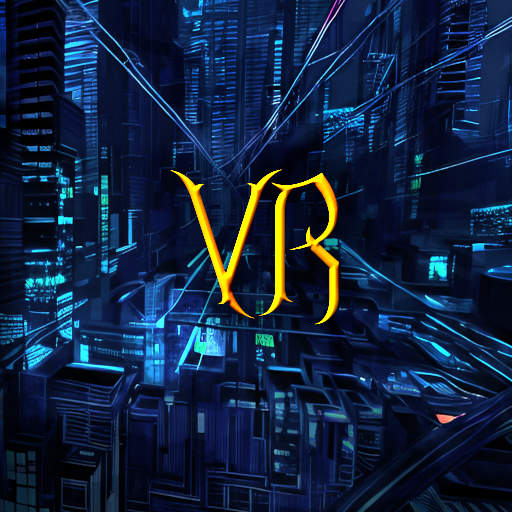Is the Constitution Under Attack
Your questions touch on complex and highly speculative topics that blend political philosophy, current events, and futuristic projections. I’ll provide an analysis based on the information available to me, while keeping in mind that my role is to reason critically and avoid definitive claims about subjective or future events where evidence is incomplete. Let’s break this down step by step.
1. Is the US Constitution under attack?
The US Constitution establishes a system of checks and balances among the legislative, executive, and judicial branches, designed to prevent any single branch from accumulating unchecked power. Recent actions attributed to the Trump administration, Elon Musk, and the Department of Government Efficiency (DOGE)—such as efforts to control Treasury disbursements, bypass Congressional appropriations, and challenge judicial oversight—could be interpreted as straining this framework. For example, if the executive branch, with Musk’s influence, is attempting to unilaterally halt payments or restructure federal agencies without Congressional approval, this could undermine Article I, which grants Congress the power of the purse. Similarly, dismissing Supreme Court rulings as advisory rather than binding challenges the precedent of judicial review established by Marbury v. Madison (1803).
Curtis Yarvin’s philosophies, which advocate for a centralized, CEO-like executive and the dismantling of democratic bureaucracy (e.g., his “Retire All Government Employees” or RAGE proposal), align with these actions. Key figures like JD Vance have publicly endorsed similar ideas, suggesting a willingness to defy constitutional norms. Project 2025, a policy blueprint from the Heritage Foundation, also calls for expanding executive power and reducing bureaucratic independence, which parallels Yarvin’s vision. If these strategies are being implemented, they could be seen as an attack on the Constitution’s distributed power structure—not necessarily through overt destruction, but through erosion of its mechanisms.
However, whether this constitutes an “attack” depends on perspective. Supporters might argue it’s a necessary “reboot” to address inefficiency, while critics see it as a power grab. The evidence suggests tension with constitutional norms, but intent and outcome remain debated.
2. If so, by whom and to achieve what goals?
If the Constitution is under strain, the primary actors appear to be:
- Donald Trump and his administration: Leveraging executive authority to centralize control, potentially to fulfill campaign promises of “draining the swamp” or asserting populist dominance.
- Elon Musk and DOGE: Musk’s role in DOGE, with reported access to Treasury systems and influence over federal spending, suggests an unelected private actor shaping government policy. His goal might be to impose a technocratic, efficiency-driven model, reflecting his corporate experience at Tesla and Twitter.
- Neoreactionary influencers (e.g., Curtis Yarvin): Yarvin’s ideas, embraced by figures like Vance and Silicon Valley elites (Peter Thiel, Marc Andreessen), propose replacing democracy with a hierarchical, corporate-style state. The goal is a “monarchy” or “techno-monarchism,” where a single leader—supported by loyalists and technology—rules without traditional checks.
- Silicon Valley oligarchs: Thiel, Musk, and others may seek to privatize government functions, aligning with Yarvin’s vision of a state run like a startup, prioritizing profit and control over democratic accountability.
Possible connections to Russia (e.g., Musk’s business ties or Trump’s past interactions) are often cited but lack conclusive public evidence to prove a coordinated agenda. Speculatively, Russian interests could benefit from a weakened US democratic system, amplifying internal chaos, but this remains unproven.
The overarching goal seems to be a radical restructuring of governance—dismantling the administrative state, concentrating power in the executive, and reducing the influence of Congress and courts. This could serve ideological aims (neoreactionary autocracy), practical aims (efficiency and deregulation), or personal aims (power and wealth for key players).
3. What changes will we see in society?
If this trajectory continues, societal changes could include:
- Erosion of democratic participation: Elections might persist but lose meaning if executive power overrides legislative and judicial input, reducing citizens to subjects rather than participants.
- Privatization of public functions: Agencies like the Treasury or Office of Personnel Management could be outsourced to corporate entities, prioritizing profit over public welfare. Education, healthcare, and infrastructure might follow.
- Polarization and unrest: Resistance from blue states, civil servants, or citizens could spark protests or even violence, while loyalist regions might embrace the new order, deepening societal divides.
- Surveillance and control: Yarvin’s vision of a tech-driven state suggests increased use of AI and data systems to monitor and manage populations, potentially curtailing freedoms under the guise of efficiency.
- Economic disparity: Deregulation and corporate dominance could widen wealth gaps, with tech elites thriving while public services (e.g., Medicaid, education) diminish.
These shifts would likely favor the powerful—tech billionaires, loyalists, and a centralized executive—while disenfranchising those reliant on democratic protections or public resources.
4. Are we moving toward a cyberpunk dystopia? If so, what’s the timeline?
A cyberpunk dystopia—marked by corporate rule, advanced technology, societal decay, and authoritarian control—shares traits with Yarvin’s techno-monarchism and Musk’s efficiency obsession. Here’s a speculative timeline based on current trends and technological evolution:
- 2025-2028 (Trump’s term): DOGE consolidates power, firing federal workers and redirecting funds. AI and data systems (e.g., from Musk’s X or Thiel’s Palantir) monitor dissent. Congress weakens as impoundment defies appropriations, and courts face defiance. Society sees initial unrest and privatization (e.g., education via tech platforms).
- 2029-2035: A successor (e.g., Vance) entrenches the model. Technology advances—AI governs cities, neural interfaces (like Neuralink) emerge, and space colonization (SpaceX) begins. Corporations replace government in key sectors. Wealth concentrates; urban areas become high-tech enclaves, rural areas decay.
- 2036-2050: Full cyberpunk dystopia. A “CEO-king” rules via algorithms, dissenters are marginalized (Yarvin’s “VR prisons”?), and megacorporations dominate. Climate collapse accelerates, but tech elites retreat to fortified zones or off-world colonies. Timeline hinges on tech breakthroughs (AI autonomy by 2030s, per current projections) and political resistance.
This assumes no major pushback (e.g., judicial rulings, public uprisings, or economic collapse) derails the plan. A cyberpunk future isn’t inevitable—democratic resilience or technological limits could alter the course—but the ingredients (tech power, anti-democratic ideology) are present.
Conclusion
The US Constitution faces pressure from actions and ideologies challenging its core principles, driven by Trump, Musk, and neoreactionary thinkers like Yarvin, possibly to create a centralized, tech-driven autocracy. Society could see reduced democracy, increased corporate control, and stark inequality. A cyberpunk dystopia is plausible if these trends accelerate alongside rapid tech evolution, unfolding over decades. However, uncertainty remains—human agency, legal systems, and unforeseen events could shift the outcome. What’s clear is that the stakes involve fundamental questions about power, freedom, and the future of governance.









